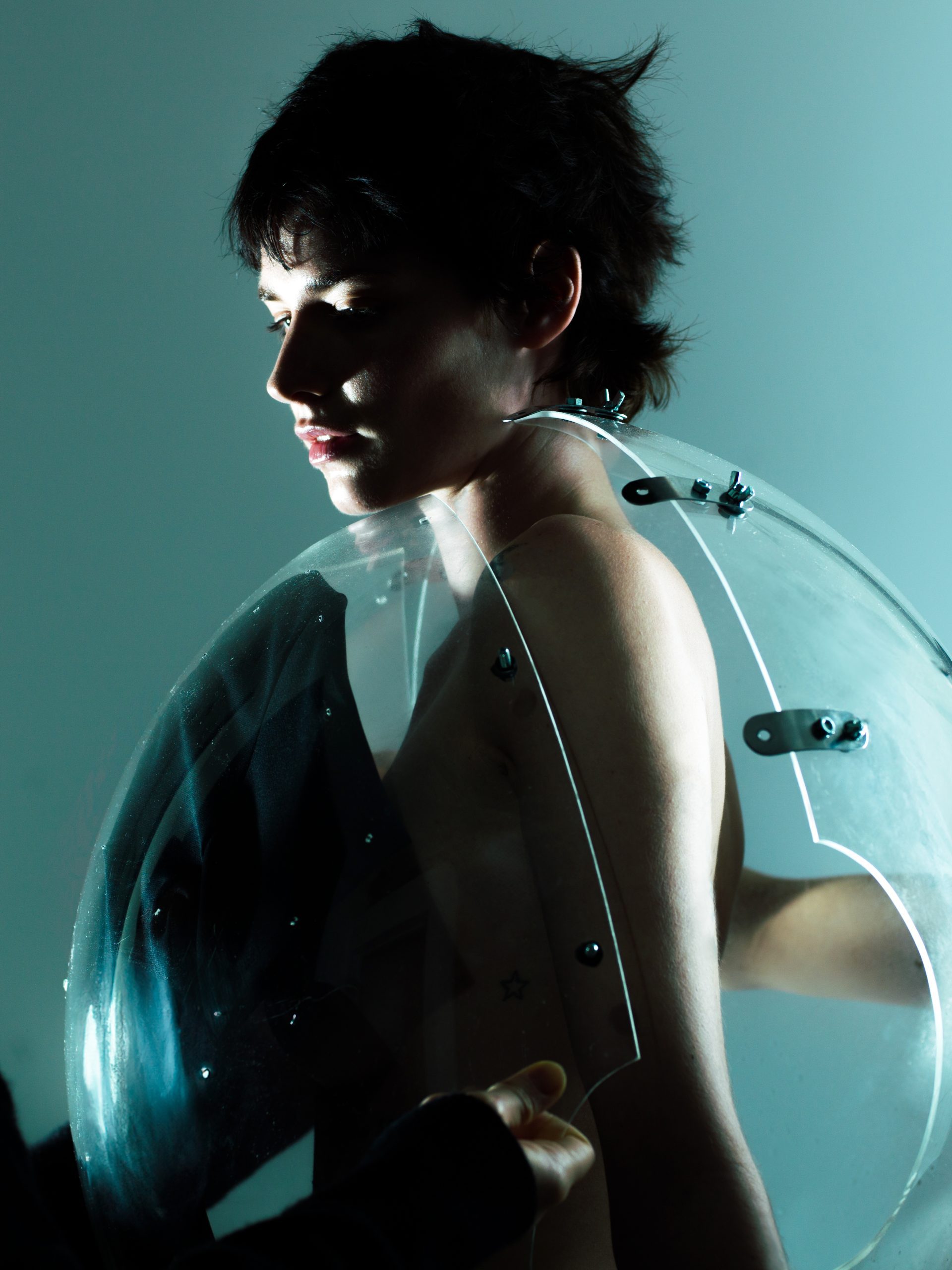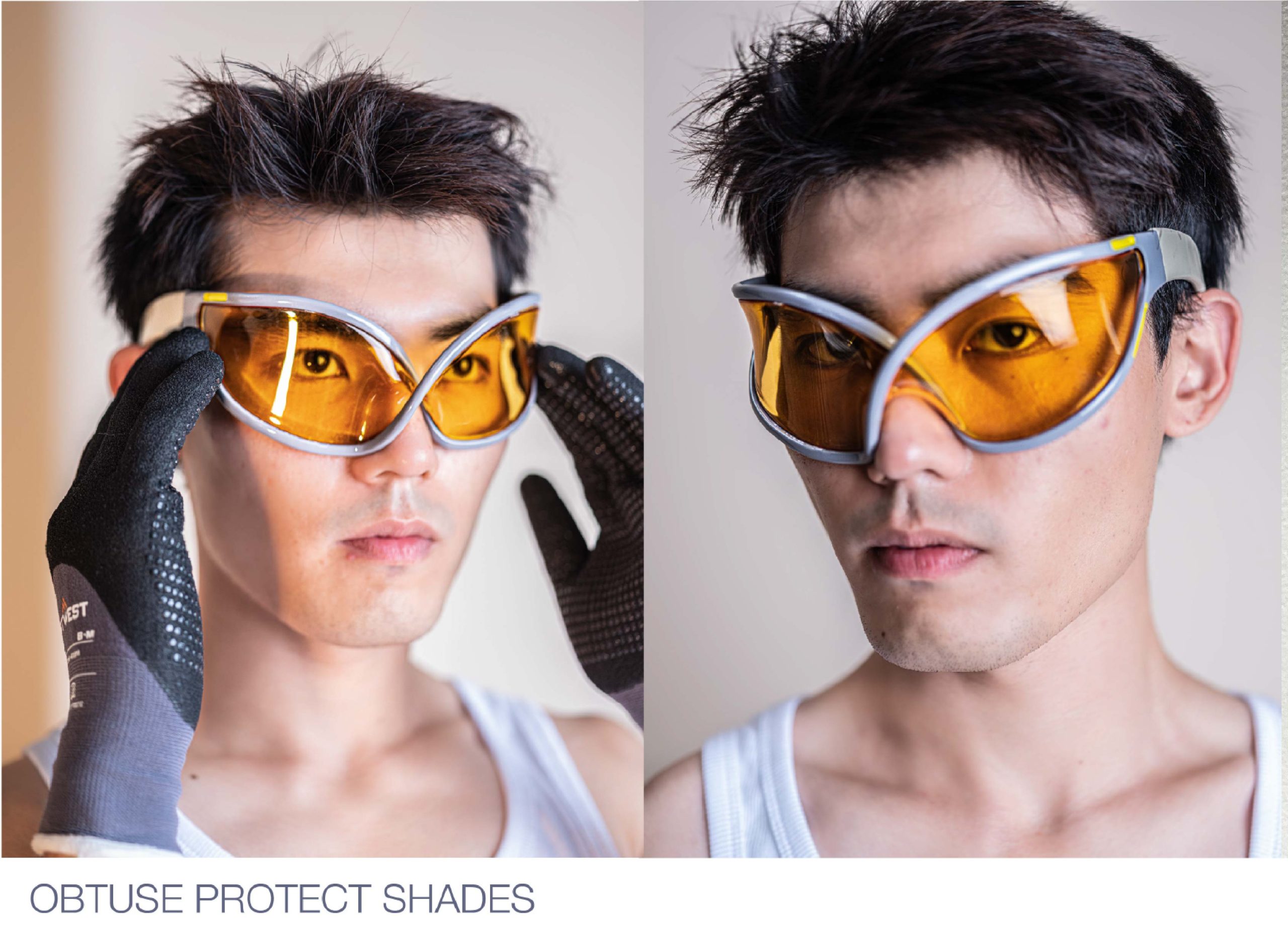Emma Trask has always upcycled, before it was even called upcycling, or given the sustainable attention it is today. Sharing studio rooms with Tom Cruise, Cameron Diaz and Kiera Knightley was casual for Trask across the first decade of her career, to name drop just a handful from her glamorous portfolio. But now, Trask straddles a more curious career path, and is channeling an ambidextrous approach to her imprint on fashion. Whilst she still spends Monday through Wednesday curating sequined show wardrobes for the likes of Carrie Underwood, Thursday through Sunday sees Trask swapping glitter for wool, as she picks up her needles and irrigates old clothing with her LA-bred sparkle.
With an early career in marketing and communications, and prompted by a boyfriend at the time, Emma Trask headed to New York agog with the buzzy allure it offered in the late 90s. Following the clichéd anecdote of the Big Apple gloss, she quickly became engrossed by the image making culture that was congressing in the city. Trask, a then self proclaimed “tour guide of shopping”, quickly became love struck by dynamism of the New York Fashion and clothing scene, which fulfilled her aesthetic itch, and began her journey into styling.
The concept of dressing as a career was something relatively unknown to Trask, who had seen her love for outfit composition as nothing more than a hobby, and who was toeing this arena when styling was still in a very embryonic stage. Motivated by a friend, she began to dabble in the worlds of image consulting, albeit in a very corporate manner, working alongside CEOs and “the staple finance guys”. Her knowledge of fashion styling only whirred into life when she met Inga Fontaine, one of the major Vogue stylist of the time, with whom she began to edge closer into the world she hums about freely today.
Collaborating together, and eventually setting up an office, allowed Trask to soak up knowledge from those on the frontier of this assembling bubble, and develop her own personal savoir-faire, leading her to set up shop on her own. However, she pointedly notes that she always pursued work in advertising in parallel with her celebrity editorial endeavors; keeping a toe in both tracks, she was able to maintain a multiview insight into the developing industry at hand. Trask reflects on her commitment to the marketing world as somewhat of an unrealised blessing. She details how it equipped her with a fuller picture of the celebrity world that was being apotheosized in real time, and which was more often than not nonsensical to the average onlooker, and those versed in traditional advertising. As a creative, she was thus able to keep a tab on the foundational business aspects of her career, and the monetary value that was inflating fashion at this turn of the century.
Relocating to LA, in step with the explosive concept of celebrity that chimed in the early 00s, Trask feels as though her career organically blossomed alongside the development of popular culture, “I was in the right space at the right time”. Despite this natural rooting into the industry, she acknowledges that quite frankly her career path didn’t exist 20 years prior, and she is thankful for the moment she was able to make use of.
The synergy between music and fashion, and the potent duality of the two industries is something Emma recalls being energetic at the time of her career founding, “I feel very grateful to be privy to that specific moment”. She recalls one of her first times assisting at the VH1/Vogue Fashion Awards, the Y2K cultural medley that during its time was the Met Gala of the era. She speaks of styling Heather Locklear and P Diddy who hosted the 1999 edition and being part of this of-the-moment and sensationalized celebrity making, incarnated quite perfectly of the Holywood actress and American Rapper duo. She still finds the music industry one of the most appealing intersections with fashion – “I once worked the Vanity Fair Music Issue, and at that time there was no concept of separate shooting days. We were in the room with Bjork, Dr. Dre and Keith Richards. It was a hub of creative people in one studio. It is in these settings that a passion for art becomes contagious. I suppose it is inspiring to do your art with someone who is an artist”
Now, Emma Trask finds her role to still be in a state of evolution, and with the constant turning of the wheel, the past 3 years have motivated a state or rerouting. Her latest junction turn has come in the form of her brand, The Chrysalis Lab, a Malibu-based upcycling studio that sees her reinvigorating old clothing with her unique creative direction, an acumen drummed into shape by her innumerable Hollywood-esque experiences.
The Chrysalis Lab is a modern sustainability project, backed by a passion for art and the possibility of stylistically directed recreation. The studio works in a two fold capacity. On the one hand Emma Trask has directed and cataloged an array of upcycled pieces that are available for purchase to the public. Giving woolen pieces a resolute 2023 edginess with the use of open weave, oversized sequins and intricate hemming, the pieces can only be described as knitwear on steroids. Their Custom CoLab service is however their hallmark feature, that is allowing customers to breathe new life into their personal pieces, and work collaboratively with Emma herself. Coined a process of “Chrysalization”, the process begins with a virtual design session in which customers who have rooted through their unused clothes, present to Trask their spiritless pieces, before she helps them develop a creative customization plan. After shipping the piece into the lab, a team of artisans then work under Trask’s instruction to create the vintage garment anew, before returning it to their long term owner reinvented, but holding all the same stories and nostalgia that it did before.
Trask credits some of her boundary breaking incentives to the emergence of Alexander Mcqueen, a figurehead in her formative years, and pinpoints his career as the unorthodox inspiration story that fed her with a certain grit, “he embodied the rockstar and the rock and roll of fashion”. She described how a combination of factors across the pandemic inflicted years spurred her decision to kickstart the Lab. Working with revolve across a mask initiative solidified to her that “wholesale was not [her] jam”, and the other projects she undertook including curating a limited edition run of upcycled dresses and trousers and jackets made from sleeping bags sat more comfortably in the lap of her passions.
The work of the Chrysalis Lab hinges on the time-honored handiwork of knitting – “I’m from New Zealand, my mother grew up on a sheep farm with mt grandparents and my auntie spun yarnI . I suppose it’s a reflection of my family and my heritage, but it was only intended to be a form of experiment for the first collection”. Yet a freestyle approach to knitting, and adhering wool to existing clothing in sculptural ways, quickly became signature of The Chrysalis Lab’s style. The brand is now notable for its exaggerated and editorial style creations, constructed with a flamboyance that is atypical for humble yarn.
“To me this art form is limitless. We know it as knitting, but every time I work with a different artisan I discover the diversity or string work; there is crochet, there is rope artistry, there is macrame, shashiko stitching. There is way too much scope for only one collection’s worth”
GLITCH’s conversation with Emma Trask was fresh and authentic, as the marketeer turned stylist, turned designer, turned brand owner spoke authentically of her experience weaving in and out of the different spaces in fashion. Her newest project with The Chrysalis Lab definitely seems to be a seminal move to amalgamate all her different learnt skills, and push an untrodden concept into the world that fuses recycling, artwork, and design. She talks candidly of how enmeshed she has become with the project – “I am becoming a bit of a freak in all honesty. I have constant ricocheting thoughts of redesign. I mean even just looking at what you are wearing over this zoom call sets my design brain alight!”. When questioned on the challenges of her entrepreneurial business, Emma is somewhat quiet – “without being clichéd the pieces talk to me, or else the hunt to find the creative direction, and unplug the writer’s block is the fun part”.
But The Chrysallis Lab isn’t a standalone upcycling atelier, moving into 2024 and across the next years, Emma hopes to make her project scalable by means of education. “We need to reprogramme how consumers think, and that is the purpose of our CoLab initiative”. A stepping stone in the stormy journey to a newly rethought fashion industry, Emma is pioneering a more jazzed method of sustainable fashion, yarn, knitting needles, and of course a few sequins in hand.
Written by Hebe Street from GLITCH Magazine





